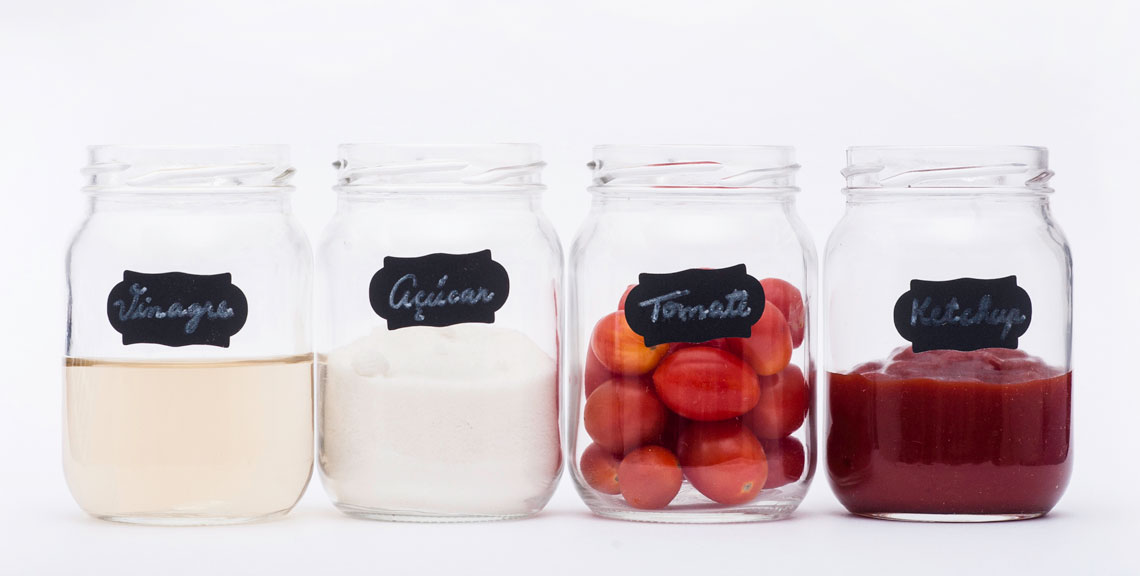Tomato, sugar, and vinegar are the essential ingredients in most ketchup products available on supermarket shelves in Brazil. Because there is no legally mandated formula for ketchup, the proportion of each ingredient can vary significantly from one brand to another. This allows for a wide range of recipes to be sold as being ketchup. Researchers from the Center for Nuclear Energy in Agriculture, at the Piracicaba campus of the University of São Paulo (CENA-USP), conducted a study examining 25 ketchup brands found in supermarkets in this small-town city in São Paulo State. The researchers found that tomatoes, on average, account for only 25% of the product’s composition.
In approximately two-thirds of the ketchup products they analyzed, tomato or tomato pulp was listed as the primary ingredient on the label. Under Brazilian regulations, food ingredients must be listed in descending order by weight. “The imagery in ketchup advertisements and labels is typically associated with tomatoes,” says Plínio Barbosa de Camargo, a crop science researcher at the Isotopic Ecology Laboratory at CENA and the lead author of the study, published March in the Journal of Food Composition and Analysis.
For each ketchup product sample, the researchers determined the value of an isotope ratio known as delta carbon-13. This parameter measures the ratio of two different forms (isotopes) of the carbon atom: the rare and heavy 13C and the lighter and more abundant 12C, derived from plant-based materials. During photosynthesis, plants produce these two types of carbon in varying amounts, and retain them in their tissues. The carbon fixation mechanisms in most plants can be categorized into two main types: the more common C3 photosynthetic cycle and the less common C4 cycle.
Carbon-13 delta values differ between C3 and C4 plants. Thus, according to the CENA research group, by determining the value of this isotopic signature for a plant-based product, a reasonably accurate inference can be made about the proportion of carbon derived from C3 and C4 plants. Tomato plants use the C3 photosynthesis cycle, as do other shrub and tree species. In contrast, corn and sugarcane, like other grass species, use the less prevalent C4 cycle. This isotopic approach has been employed by the CENA researchers in their food and beverage studies since the 1990s. The group has conducted studies on a wide range of food products, including wine, beer, soy sauce, and pet food (see Pesquisa FAPESP issues nº 94 and nº 278).
In their ketchup study, they found that, on average, 75% of the carbon in the sauces they tested originated from C4 plants, a group that includes sugarcane — the source of the sugar and alcohol vinegar contained in ketchup; and corn — the source of the starch often used in ketchup products. One particular brand had a carbon contribution of 92% from C4 plants, while the brand with the lowest C4 content stood at 58.2%. C3 plants — a group that includes tomatoes as well as plants typically used for seasoning (such as onion and pepper) and as thickeners (such as cassava starch) — contributed, on average, 25% of the carbon found in ketchup products.
Karina Gonçalves, a doctoral student in botany at the Isotopic Ecology Laboratory at CENA-USP, and the lead author of the study, says the researchers expected to see a higher percentage of isotopes originating from the tomato group in ketchup. “The significantly high presence of C4 plants was surprising,” says Gonçalves. “Ketchup packaging is commonly associated with the color red, and all labels feature imagery of tomatoes. And with tomatoes often being at the top of the ingredient list, consumers are led to believe that there is a substantial amount of tomato in these products.”
Nearly 67% of ketchup brands feature tomato or tomato pulp as the first ingredient. Sugar ranks second on the ingredient list in 62% of cases. Vinegar appeared as the third ingredient in 57% of samples. Eight brands list water as the primary ingredient. In 14 brands, water was not included as an ingredient. Certain brands utilize thickeners, such as corn starch, to achieve the characteristic consistency of the product.
The Brazilian Health Regulatory Agency (ANVISA) defines ketchup as a product made from ripe tomato (Lycopersicum esculentum) pulp. Under ANVISA Resolution nº 727 of 2022, other ingredients like spices, condiments, starches, and preservatives may also be added, as long as their presence “does not alter the nature of the product.” There are no specific regulations mandating a minimum quantity of tomatoes or dictating the proportions of ingredients.
Pesquisa FAPESP attempted to contact the press office of the Brazilian Association of Industrial Tomato Processors and Users (Tomate BR) multiple times for comment on the study’s findings, but received no response.
Scientific article
SILVA, K. G. et al. Isotopic characterization of Brazilian ketchup: Is tomato its main ingredient? Journal of Food Composition and Analysis. mar. 11, 2023.


